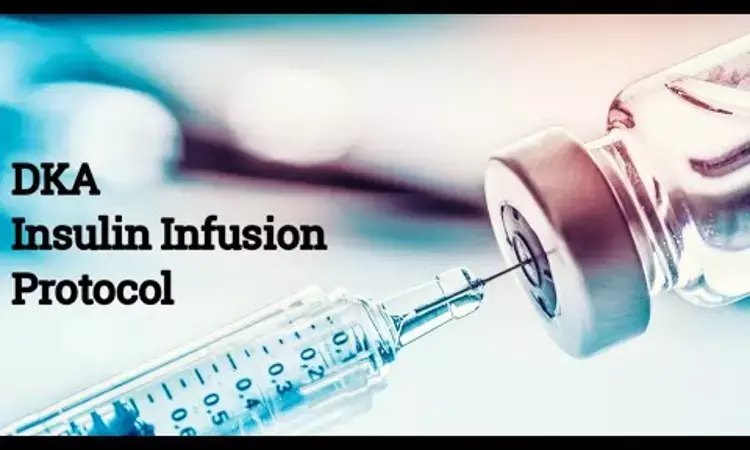- Home
- Medical news & Guidelines
- Anesthesiology
- Cardiology and CTVS
- Critical Care
- Dentistry
- Dermatology
- Diabetes and Endocrinology
- ENT
- Gastroenterology
- Medicine
- Nephrology
- Neurology
- Obstretics-Gynaecology
- Oncology
- Ophthalmology
- Orthopaedics
- Pediatrics-Neonatology
- Psychiatry
- Pulmonology
- Radiology
- Surgery
- Urology
- Laboratory Medicine
- Diet
- Nursing
- Paramedical
- Physiotherapy
- Health news
- Fact Check
- Bone Health Fact Check
- Brain Health Fact Check
- Cancer Related Fact Check
- Child Care Fact Check
- Dental and oral health fact check
- Diabetes and metabolic health fact check
- Diet and Nutrition Fact Check
- Eye and ENT Care Fact Check
- Fitness fact check
- Gut health fact check
- Heart health fact check
- Kidney health fact check
- Medical education fact check
- Men's health fact check
- Respiratory fact check
- Skin and hair care fact check
- Vaccine and Immunization fact check
- Women's health fact check
- AYUSH
- State News
- Andaman and Nicobar Islands
- Andhra Pradesh
- Arunachal Pradesh
- Assam
- Bihar
- Chandigarh
- Chattisgarh
- Dadra and Nagar Haveli
- Daman and Diu
- Delhi
- Goa
- Gujarat
- Haryana
- Himachal Pradesh
- Jammu & Kashmir
- Jharkhand
- Karnataka
- Kerala
- Ladakh
- Lakshadweep
- Madhya Pradesh
- Maharashtra
- Manipur
- Meghalaya
- Mizoram
- Nagaland
- Odisha
- Puducherry
- Punjab
- Rajasthan
- Sikkim
- Tamil Nadu
- Telangana
- Tripura
- Uttar Pradesh
- Uttrakhand
- West Bengal
- Medical Education
- Industry
Low- insulin infusion can be a safer approach in the management of pediatric DKA : study

Diabetic ketoacidosis(DKA) is one of the complications of pediatric type 1 DM with significant morbidity and mortality if left untreated. The cornerstones of DKA management are fluid and insulin therapy. Researchers from JIPMER(Puducherry) found that low-dose insulin therapy was associated with less therapy related complications as compared to standard dose therapy in patients with DKA.
High dose(1U/kg/hr) and bolus insulin therapy in management of DKA are no longer practiced after recent studies showing that a dose of 1U/kg/hr can reduce blood glucose level with lower rates of side effects. Recent guidelines recommend insulin infusion at a dose of 0.05 to 0.1 Unit/kg/hour, and low-dose insulin is considered safe and effective for treatment of DKA. A few studies in literature have shown that a dose of insulin as low as 0.03 to 0.05 U/kg/hr could normalize blood ketone levels.
In this randomized double-blinded controlled trial, a total of 60 patients were analysed among which 30 patients received standard dose insulin therapy(0.1U/kg/hr) and other 30 patients received low-dose(0.05U/kg/hr) therapy. Consecutive children 12 years or younger who presented with DKA defined as hyperglycemia (blood glucose >200 mg/dL), acidosis (pH<7.3 or bicarbonate <15mEq/L) and ketonemia or ketonuria. Children with septic shock or who received insulin therapy before enrollment were excluded. None of the patients had cerebral edema in this study.
Major findings of the study are:
-Mean (SD) time taken for the resolution of ketoacidosis was similar in both groups [22 (12) hours vs 23 (18.5) hours; P=0.92].
-The adjusted hazard ratio (95% CI) of the resolution of ketoacidosis was significantly lower by 60% in the low-dose group as compared to standard-dose group [0.40 (0.19 to 0.85); P=0.017].
-The hazard ratio of the resolution of raised beta-hydroxybutyrate (<1mmol/L) was significantly lower by 65% in the low-dose group [adjusted hazard ratio 0.35, 95% CI: 0.17 to 0.74; P=0.006].
-The mean (SD) rate of blood glucose fall per hour and the time taken until the level was 250 mg/dL was similar in the two groups but the mean trend in fall of blood glucose until six hours and 24 hours was higher in the standard-dose group as compared to low-dose group.
-The frequency of fall in blood glucose, more than 90 mg/dL/ hour, was higher in standard-dose group than the low-dose group.
-Therapy-related complications such as hypoglycemia and hypokalemia were higher in the standard-dose group as compared to the low-dose group.
Authors quote that-In low-middle income countries, patients may benefit from low-dose insulin because of associated comorbidities, such as malnutrition, high risk of therapy-related hypokalemia, and hypoglycemia
"The time for resolution of ketoacidosis was similar in the low-dose and standard-dose insulin infusion, with a lower rate of therapy-related complications in low-dose insulin. Hence, insulin infusion at 0.05 Unit/kg/ hour is a safer approach in the management of pediatric DKA"-authors conclude.
Source: Rameshkumar R, Satheesh P, Jain P, Anbazhagan J, Abraham S, Subramani S, Parameswaran N, Mahadevan S. Low-Dose (0.05 Unit/kg/hour) Versus Standard-Dose (0.1 Unit/kg/hour) Insulin in the Management of Pediatric Diabetic Ketoacidosis: a Randomized Double-Blind Controlled Trial. Indian Pediatr. 2021 Feb 19:S097475591600286.
Dr Kamal Kant Kohli-MBBS, DTCD- a chest specialist with more than 30 years of practice and a flair for writing clinical articles, Dr Kamal Kant Kohli joined Medical Dialogues as a Chief Editor of Medical News. Besides writing articles, as an editor, he proofreads and verifies all the medical content published on Medical Dialogues including those coming from journals, studies,medical conferences,guidelines etc. Email: drkohli@medicaldialogues.in. Contact no. 011-43720751


